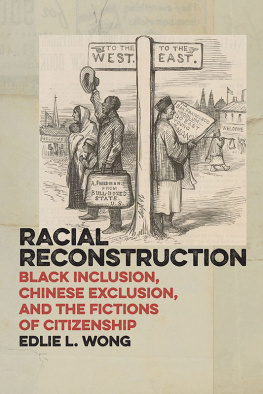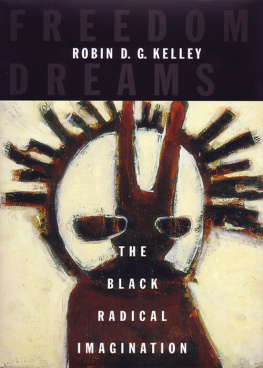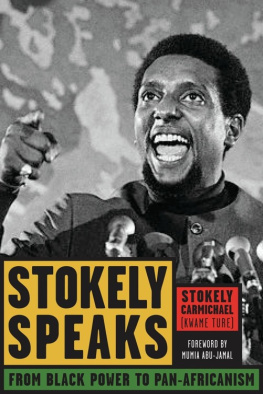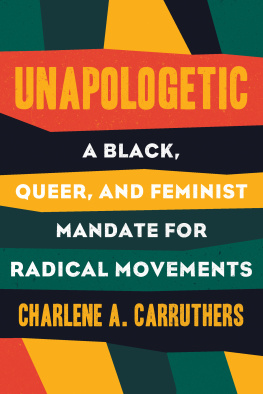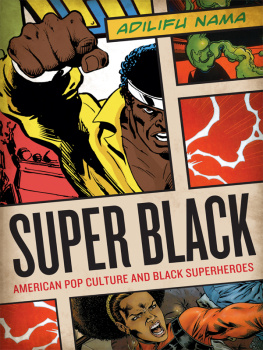2015 Robeson Taj P. Frazier
Acknowledgments
As a preteen and adolescent, I spent portions of my summers and holidays helping my father rummage through and catalogue his deceased clients belongings. An attorney who handles estates, wills, and probate, he is frequently left with the task of organizing and obtaining an accurate value assessment of his clients assets. Years ago, this often meant using my slim and tall frame to squeeze through doorway openings crammed partially shut by boxes, climb through windows, or crawl through the dark passageways of attics, garages, and basements. Nine times out of ten the client was a hoarder, one of those people who you might see on television who has accumulated a treasure trove of random artifacts and goodies. I laugh now recalling my shock when on one occasion I found three extremely old pistols. The next day one of my fathers colleagues confirmed that they were preCivil War weapons and were worth a serious chunk of change.
Leafing through someone elses belongings, usually in dingy, badly lit, dust-filled, cramped spacesthe dungeons and tombs of the dead is how I described them to my friendsgave me an intimate introduction to the archive as both immaterial and material. In these peoples records, books, photographs, art, newspaper clippings, magazines, letters of correspondence, diaries, coins, plates, and other weird and interesting items were some aspects of the lives they lived, the communities and individuals with whom they identified and loved, and meanings through which they came to make sense of their existence and the periods through which they lived and struggled. Amid the age, decay, and chaos of their homes and the articles they valued, I was interacting with the past, present, and futureall at once. Coincidentally, around this same time of my life, my mother enrolled me in a Mandarin Chineselanguage class.
This book in its embryonic form and, moreover, my passion for writing, research, and teaching are influenced by many people. For one, this book is a product of instruction by numerous educators and mentors: Julian Pyles,Yen-Lung Liu, Willy MacMullen, Robert Allen, VV Clark, Ula Taylor, Charles Henry, Leigh Raiford, Percy Hintzen, Waldo Martin, Ramn Grosfoguel, Victoria Bonnell, Evelyn Nakano Glenn, Peter Monroe, Quam Love, Lindsey Herbert, Glenn Robertson, Manning Marable, Barbara Savage, Susan Peterson-Pace, Max-Henri Covil, Oni Faida Lampley, James Spady, Herman Beavers, Farah Griffin, Guthrie Ramsey, Robert Engs, Robert Vitalis, Anthony Monteiro, Chad and Madeleine Williams, Valerie Swain-Cade McCoullum, Patricia Ravenell, and the staff and leadership of the Greater Harlem Chamber of Commerce. I must add that Gerald Horne and Robin D. G. Kelleys insight, scholarship, and generosity have been integral to this work. At different moments, they have challenged and nuanced this books claims and broadened my understanding of diasporic black radicalism; the relationship between history, politics, and culture; and the shifting dynamics of global capitalism. Other scholars have provided fantastic support, guidance, and feedback, in particular Carol Anderson, Sherle Boone, Thomas Borstelmann, Herb Boyd, Rod Bush, John Jackson, Minkah Makalani, Erik McDuffie, and David Perlmutter.
My editor Courtney Berger has been a lifesaver. Besides identifying readers whose reviews were substantially helpful in clarifying my ideas and expanding several running threads, she went far beyond the call of duty in enhancing the manuscripts revision. Additional gratitude must go to Erin Hanas, Danielle Szulczewski, and the rest of the Duke University Press staff for finalizing this works transition from disparate text and images to coherent product.
I want to especially thank my colleagues Josh Kun and Sarah Banet-Weiser, two brilliant people whose ever-constant generosity, support, and friendship have been instrumental in this books evolution and completion. I also wish to express my gratefulness to my other Annenberg School colleagues, particularly Sandra Ball-Rokeach, Alison Trope, Chris Smith, Tom Hollihan, Jonathan Aronson, Yu Hong, Lian Jian, Robert Scheer, Michael Cody, Nick Cull, Andrea Hollingshead, Henry Jenkins, Dorine Lawrence-Hughes, Flix Gutirrez, Allyson Hill, and JaBari Brown. I must especially thank Lori Kido-Lopez, Su Liu, and Lin Zhang for their phenomenal research support, and Dean Ernest Wilson, Vice Dean Larry Gross, Imre Meszaros, Peggy McLaughlin, Christine Lloreda, Billie Shotlow, and Carol Kretzer for their institutional support and for facilitating a generative teaching and research environment for the books completion. Exchanges with other University of Southern California affiliates were also vital, especially discussions with Shana Redmond, Lanita Jacobs, Kara Keeling, Francille Wilson, Dayna Chatman, Inna Arzumanova-Bell, Sophia Azeb, Maytha Alhassen, Joshua Goldstein, Stan Rosen, Ange-Marie Hancock, Jack Halberstam, Dorrine Kondo, and Neetu Khanna.
Work of this nature is nothing without the assistance and time of institutionsand people committed to advancing scholarship and research. A huge debt is owed first to those people who allowed me to interview them and examine their families archives: Lincoln and Miranda Bergman, John and Mabel Williams, Sidney Rittenberg, Carlos Moore, and Grace Lee Boggs. I must also thank Lincoln Cushing, Deborah Rudolph, and the C. V. Starr East Asian Library at the University of California, Berkeley; Karen Jania and the staff at University of Michigans Bentley Historical Library; Claude Marks and the Freedom Archives; Harriet Evans, Emily Williams, and the University of Westminsters China Poster Collection; the Center for the Study of Political Graphics; and staffs at the Schomburg Research Center, Wayne State Universitys Walter Reuther Library, Beijings National Library, the University of Hong Kong Library, New York Universitys Tamiment Library, and the National Archives. This book was also aided by fellowship support from the Mellon Mays Program, the Woodrow Wilson National Fellowship Foundation, and the University of Southern Californias Advancing the Humanities Initiative.



